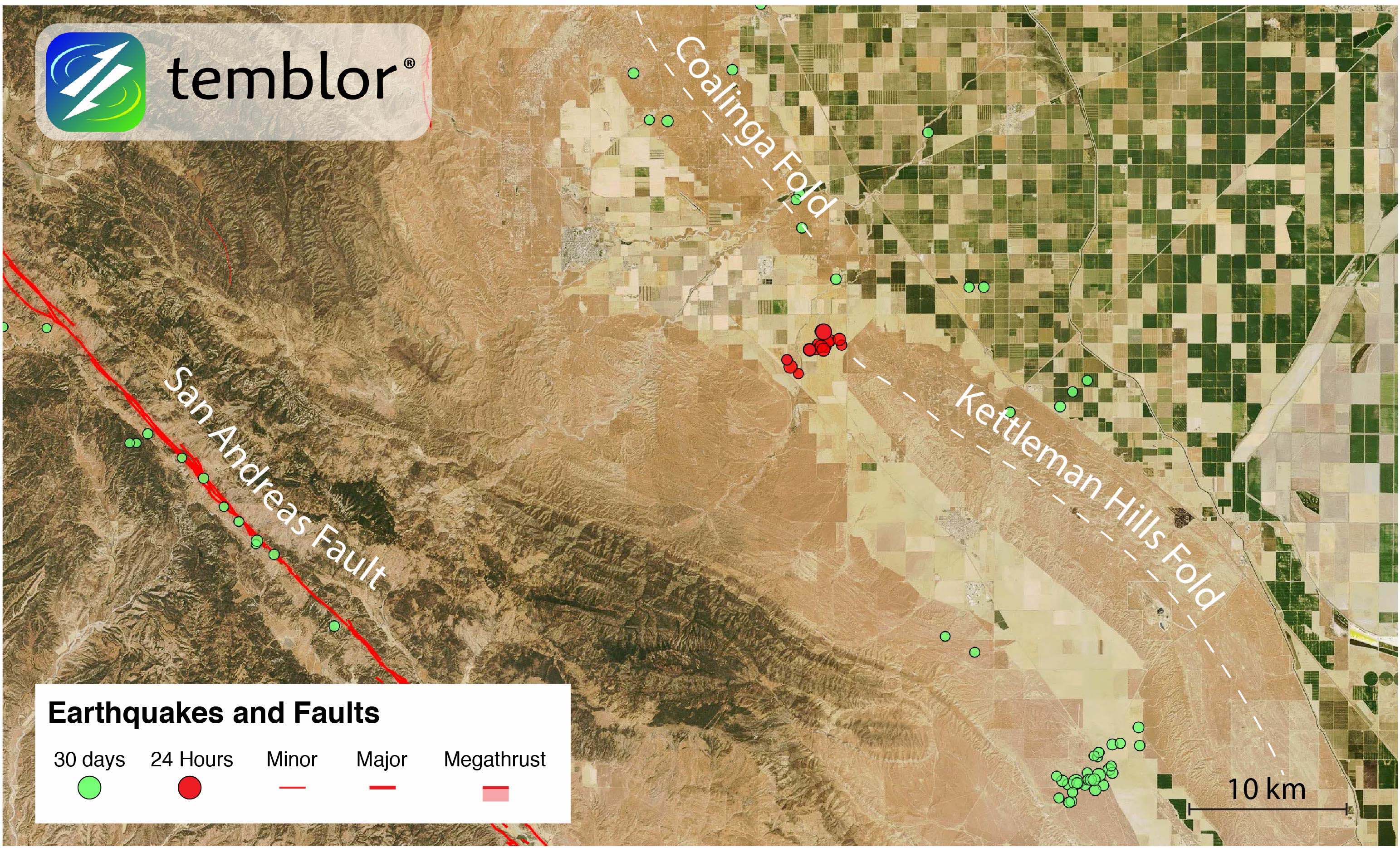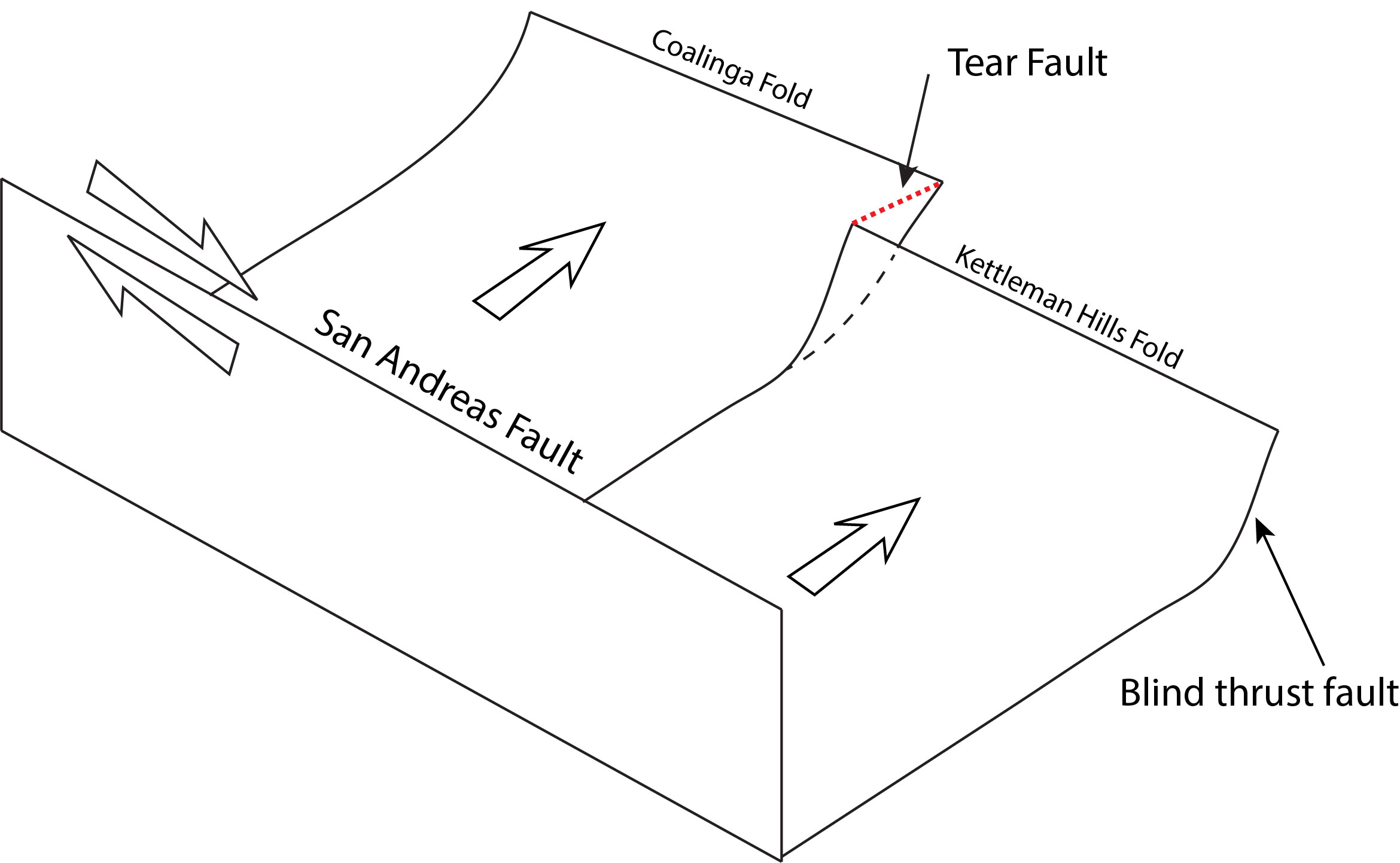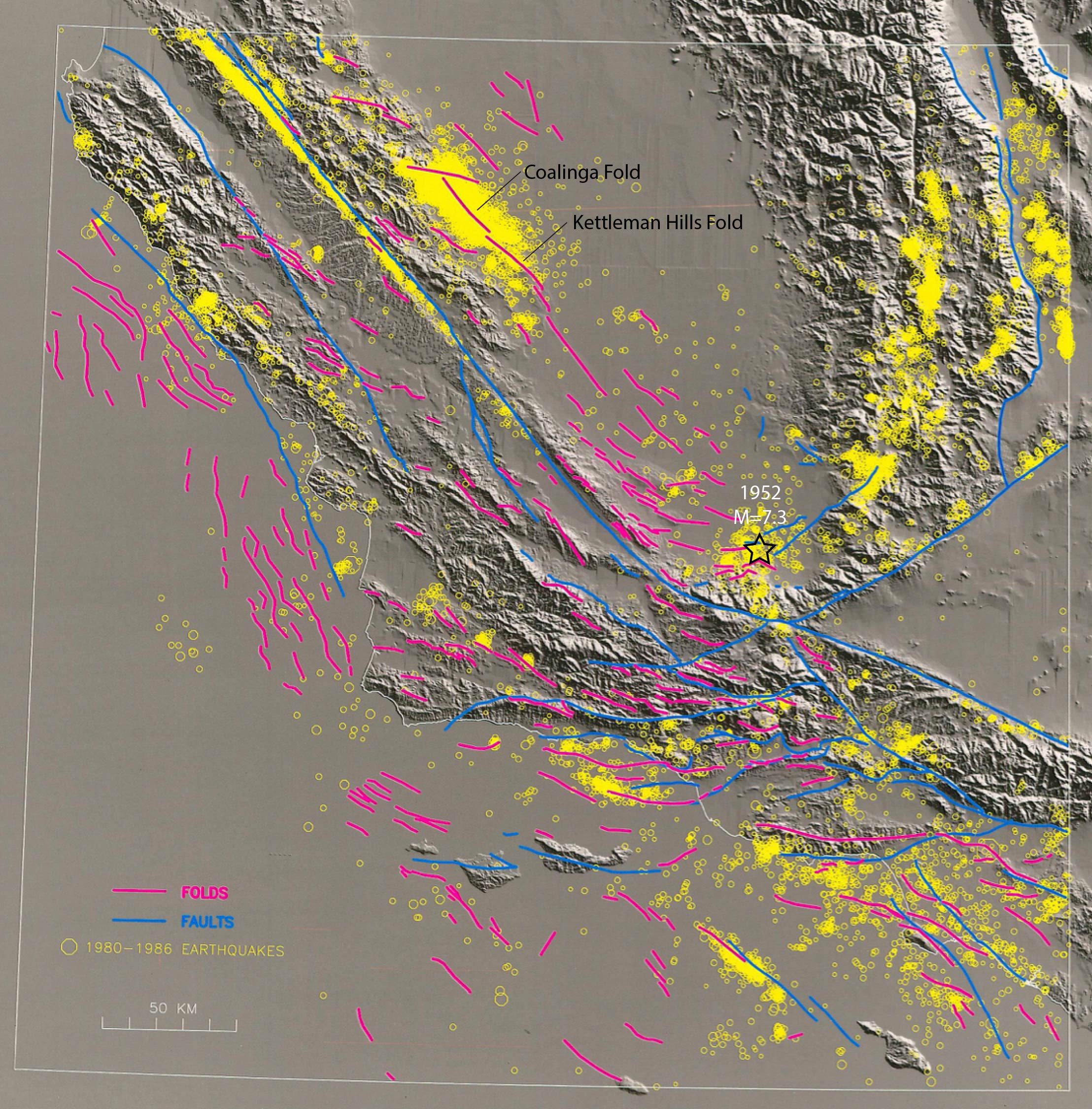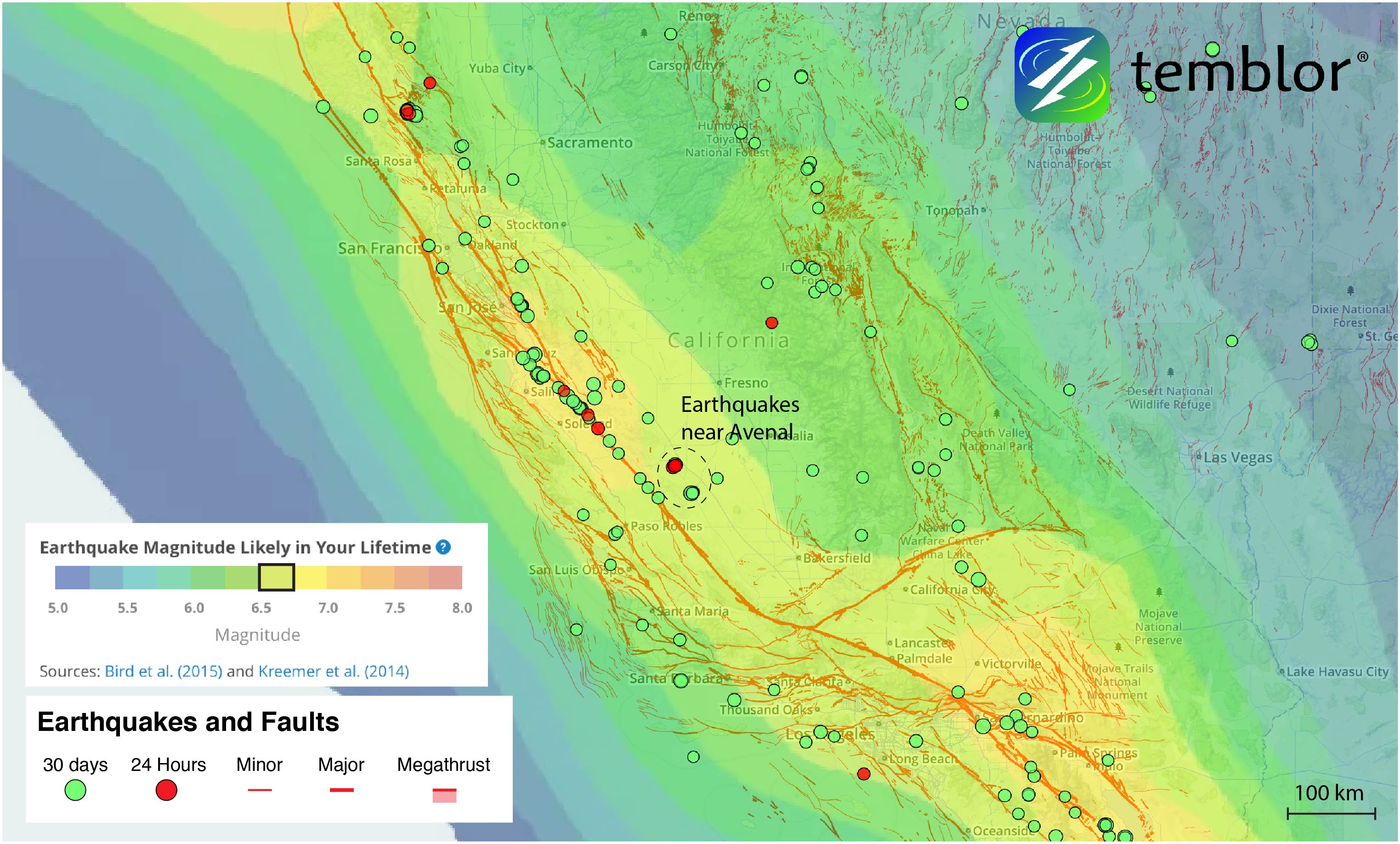By David Jacobson and Ross Stein, Temblor
Check your seismic hazard rank

In the last 24 hours, there have been 15 small earthquakes within a area just northwest of Avenal, California. These quakes ranged from M=1.5 to a M=3.3, registering 65 felt reports on the USGS website. These earthquakes, as well as a larger cluster 4-5 days ago, are not close to any mapped surface faults. In fact, the closest major fault that cuts the earth’s surface is the San Andreas, approximately 30 km (20 mi) away. Because of this, we thought we’d take a look at the potential seismicity source for the earthquake clusters near Avenal.
East of Avenal lies a chain of upwarped folds (‘anticlines’) that mark the western margin of the San Joaquin Basin. An anticline is a folded strata, resembling an arch, that is the product of compression. In the case of the these folds, they are the result of ‘blind thrust faults,’faults that are active but do not cut the earth’s surface. Slip on these faults have slowly pushed up and folded the overlying strata. These faults accommodate several millimeters per year of contraction perpendicular to the San Andreas Fault. So, the San Andreas can only take care of the strike-slip motion; what’s left over is compression acting perpendicular to the San Andreas, and this gets accommodated by the thrusts.

As blind thrust faults evolve, several things happen. First, they can slip in large earthquakes, which struck here in the May 2, 1983 M=6.5 Coalinga, and the August 4, 1985 M=6.1 Kettleman Hills earthquakes. Second, as the originally horizontal strata is folded, traps for oil are created. In fact, the Coalinga Oil Field is the eighth largest in California and went into production in 1890. Lastly, at the junctions between folds, “tears” can form. Yesterday’s quakes appear to be on these tear faults.

The schematic diagram below illustrates what is likely occurring near Avenal. Rather than being continuous, the blind thrusts have tears between the segments, where strike-slip quakes can occur. Here, the resulting tear faults would be ‘right-lateral’ (whichever side you are on, the other sides moves to the right).

These small quakes are thus emblems of a hidden hazard: the potential for M~7 quakes on the blind thrust segments. According to the Global Earthquake Activity Rate (GEAR) model shown in Temblor, an earthquake of magnitude M=6.50 is likely in your lifetime along much of the western margin of the valley. The M=7.3 Kern County shock struck the southern end of the Great Valley in 1952.


References
USGS
Caltech
Goran Ekstrom, Ross S. Stein, J.P. Eaton, and D. Eberhart-Phillips, Seismicity and Geometry of a 110-kim-Long Blind Thrust Fault: The 1985 Kettleman Hills, California, Earthquake, Journal of Geophysical Research, Vol. 97, NO. B4, p. 4843-4864, April 10, 1992. – Link
Stein, R.S. and Yeats, R.S., Hidden Earthquakes, Sci. Am., 260, . 48-57, June, 1989. – Link
- Beware quiet segments of the Philippine Fault - May 16, 2025
-
ډیری عوامل افغاني ټولنې د زلزلې پر وړاندې زیانمنوي
- August 11, 2022 - What’s happening this week in Humboldt County, California: The squeeze - February 6, 2019
